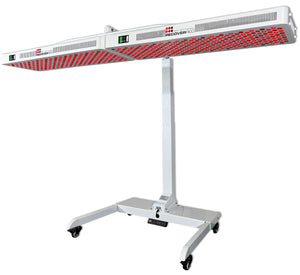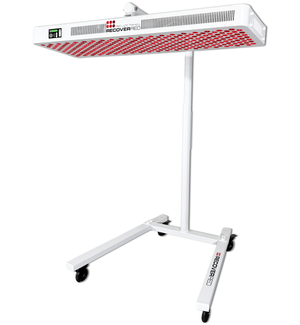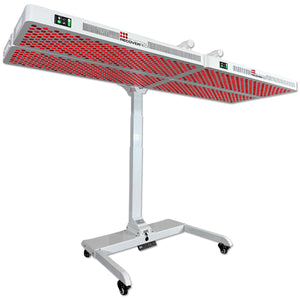Curious about Red Light Therapy? – Discover the transformative influence of red light therapy (RLT), a revolutionary treatment that targets wrinkles, redness, acne, scars, and more. By enhancing the energy production in your cells, RLT shows promising potential in addressing various skin concerns.
In this guide, we'll explore Red Light Therapy - from understanding what RLT is and how it works to exploring its uses, risks, and where to get treatment. So, let's get started!
Understanding Red Light Therapy
Red Light Therapy is a cutting-edge, non-invasive treatment that utilizes low-wavelength red light to enhance the appearance of your skin and address various medical conditions. RLT goes by several names, including low-level laser light therapy and soft laser therapy. It can help you reduce wrinkles, scars, and redness and even combat acne with the power of low-wavelength red light. [1]
Red light therapy's journey began in the early 1990s when scientists discovered its positive impact on plant growth in space. Inspired by this, researchers explored the therapy's potential application in human medicine. [2]
From addressing muscle atrophy to slow wound healing and even bone density issues caused by weightlessness during space travel, red light therapy showed promise. It has also found acceptance in photodynamic therapy, treating skin conditions such as skin cancer. [3]
How Does it Work?
The magic behind red light therapy lies in its ability to strengthen the mitochondria – the energy powerhouses of our cells. By stimulating the mitochondria, red light therapy boosts the production of adenosine triphosphate (ATP), the molecule responsible for cellular energy. [4] This increased energy empowers cells to rejuvenate and repair themselves more efficiently.
Unlike laser or intense pulsed light therapies, red light therapy doesn't damage the skin surface. It directly stimulates skin regeneration, penetrating up to 5 millimeters beneath the skin's surface.
Uses of Red Light Therapy
Red light therapy has garnered significant attention, with numerous studies investigating its potential medical benefits. While controversy persists, evidence suggests that red light therapy may:
- Aid wound healing
- Reduce acne and wrinkles
- Promote tissue repair
- Improve skin complexion and build collagen
- Alleviate pain
- Reduce psoriasis lesions
- Diminish scars
- Promote hair growth in people with androgenic alopecia
- Improving joint health in people with degenerative osteoarthritis
- Relieving pain and inflammation in people with Achilles tendon pain [5]
Is Red Light Therapy Safe?
RLT is generally considered safe, although the exact mechanisms and optimal light dosage are still being explored. Excessive exposure may damage the skin, while insufficient light may yield unsatisfactory results. Following instructions and avoiding misuse is important to prevent potential skin or eye damage.

Experience the Power of Red Light Therapy at Red Recover: Your Path to Rejuvenation and Wellness
Ready to experience the benefits of red light therapy? Consultation with your healthcare provider or dermatologist is a wise first step. They'll provide valuable guidance tailored to your specific needs.
When it comes to reliable treatment, look no further than Red Recover. The trained professionals at Red Recover are dedicated to delivering exceptional care and optimal results. So, take the next step towards rejuvenation and wellness with Red Recover: Your Trusted Destination for Red Light Therapy!
Reference
- Clinic , C. (2021). Red light therapy: Benefits, Side Effects & Uses. Cleveland Clinic. https://my.clevelandclinic.org/health/articles/22114-red-light-therapy
- Cafasso, J. (2023, February 23). Red light therapy: Uses, benefits, and risks. Healthline. https://www.healthline.com/health/red-light-therapy#_noHeaderPrefixedContent
- Clinic, C. (2022). Photodynamic therapy (PDT): Procedure, uses & recovery. Cleveland Clinic. https://my.clevelandclinic.org/health/treatments/17922-photodynamic-therapy-pdt
- GE, G. (2021). Photobiomodulation: The clinical applications of low-level light therapy. Aesthetic surgery journal. https://pubmed.ncbi.nlm.nih.gov/33471046/#:~:text=The%20absorption%20of%20red%2Fnear,marketed%20directly%20to%20the%20consumer.
- Hamblin, M. R. (2017). Mechanisms and applications of the anti-inflammatory effects of photobiomodulation. AIMS biophysics. https://www.ncbi.nlm.nih.gov/pmc/articles/PMC5523874/




